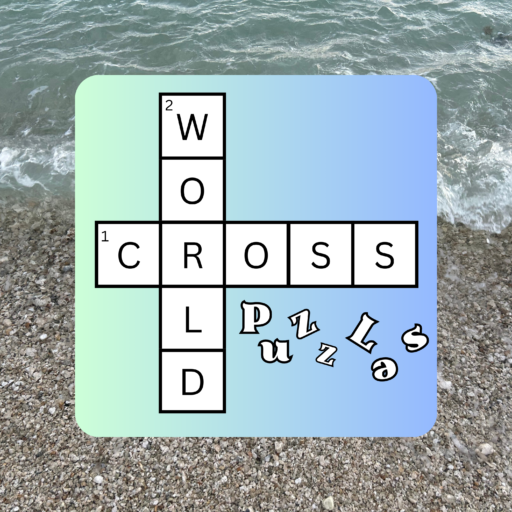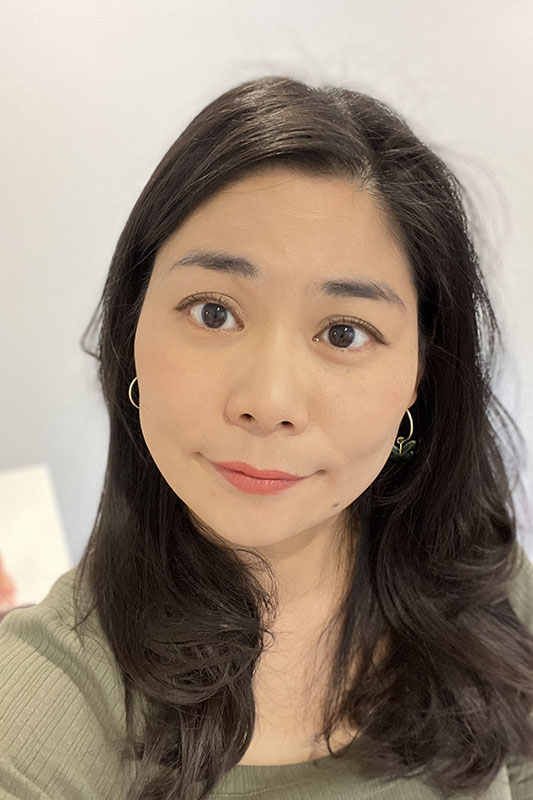
Mari Yobp was born and raised in Japan. She grew up in Zushi City, which faces the Pacific Ocean and is about an hour away from Tokyo. She also lived in Hong Kong for a year and a half when she was 4 years old. She majored in oil painting and printmaking at Musashino Art University, and started working as an art teacher. She also studied etching at Il Bisonte in Florence, Italy, and spent a year making and exhibiting art. She met her husband at the school where she worked in Osaka, and immigrated to the U.S. in 2013. They live in Pittsburgh, PA, but also spent 2 years in Idaho from 2019 to 2021. Mari draws and paints mostly flowers in watercolor. She also makes tanka poetry frequently and publishes her work in the magazine Cho-On. She worked at Trader Joe’s as a sign artist (2015-2017), and then became a mom. She was rehired at the end of 2023 and is currently working part-time.
(Click on this icon to follow Mari: ![]() )
)
Podcast
Transcript
Introduction
Hello, everyone.
I’m super excited to welcome today my wonderful friend, Mari Yobp. Mari and I met way back in middle school in Japan, and we hit it off immediately because of our mutual interest in art and literature. I never knew back then that we would both end up being here in the United States!
Mari is now a talented painter, poet, educator, and an amazing mom based in Pittsburgh. I’m looking forward to hearing about the journey that led her to the United States, her passion for art and words, and above all, her resilience and her ability to maintain kindness and a sense of wonder, regardless of what challenges come her way.
Thank you so much, Mari, for joining me today.
Thank you so much for having me, Shiori.
It is such a pleasure to be here and part of your wonderful podcast program. I’m flattered by all your sweet words, and it almost brings me to tears. I’m excited to talk about my past decades in the U.S. and more.
I know that you’ve overcome a lot of challenges, which is something that I’m looking forward to hearing about. I’m really grateful that you’re willing to be on here and talk about something so personal.
Childhood and Upbringing
But first, I want to start from the very beginning. Please tell us where you were born and raised.
I was born and raised in Japan. I grew up in a little suburban town near Tokyo. I lived in Japan for almost 30 years until I moved to the U.S. in 2013 because of my marriage to an American citizen.
Did you always have an interest in foreign cultures and the English language, etc., or are you surprised that you ended up being in the U.S.?
Living in the U.S. or marrying an American citizen was a surprise. But when I look back at my childhood, I have always been interested in the English language [so maybe it was meant to be].
I also loved watching American TV dramas in my youth. I started with Full House in elementary school. It was funny to hear how the audience said “Aww” on the show and overreacted.
Yeah, the laugh track!
I also liked how in that show, family was so important, and the father was always making sure that the kids had no worries left before they went to bed. I think it represented a really good part of American culture.
I also loved watching 90210, Ally McBeal, and Dharma & Greg. I think the Japanese voice actors were doing great, and I was shocked to watch the real show in English later on.
Because their voices are so different?
Yeah, their voices are so serious!
If I can talk a little more about how my interest in English started, when I was three or four years old, my mom got me a little card reader. When the machine read the cards, it talked. The cards had pictures of a children’s book. Those English stories were really fun, like Pinocchio, or the story of a hippopotamus family just having breakfast. I loved those little cards.
I think it that was good that I heard those sounds and expressions before I started to recognize those English words in katakana [Japanese phonogram for foreign words]. I first learned what the words sounded like. And I thought, “This is fun.”
And then I luckily had English classes in elementary school because I went to a private school. And I remember how my English teacher picked me and another girl to attend a Halloween party at the local international school.
I also went to the junior high school where you and I spent three years together. And our school was very ambitious about providing an impactful global education. We were blessed to have English courses in a variety of ways, and I got to talk with teachers who were native speakers. I felt strong joy when I spoke in English and they understood me. That was so exciting.
I think that kind of joy in English conversation brought me here. My interest in English was tied to how much I want to connect with people.
That’s wonderful. Thank you so much for sharing that.
Pursuing Art
I also wanted to ask about your career in art. How did you first become interested in art? And you went to an art university, which I think is a big decision that maybe took some courage. Could you tell me about how you decided to pursue art?
Since I became a mother [eight years ago], it’s been hard to take a moment and think about my connection to art. But making art, especially drawing and painting, has been always a big part of my core self since childhood.
I think it’s because when I paint or draw, and when I observe the motif [or subject that I want to paint], it’s spiritual. It’s different for everyone, but for me it’s like a Zen moment. I need that time, and that’s why even though there are some blank [periods in my career], I’ve kept that part of me.
About pursuing art as a career, when I decided to go to art university, I was not sure about what kind of job I could get. Now I think I should have learned more. I had the skills to draw by hand, but I didn’t have skills in computer graphics. And later on, when I worked at a high school that had an art course, the director of that course said that we needed two wheels. He said that one was fine art, and the other was web designing and computer skills. And I only had one wheel.
If I could go back, I would take more classes in computer graphics, but I just focused on fine art. And the only decent job I could think of was teaching. I think a lot of students majoring in fine art think that way. So I got a teaching certificate and worked as a teacher for eight years in Japan.
Those eight years meant a lot to me. I enjoyed teaching art. Kids who like art have some things in common. They want to have a quiet space, and they think about things a little spiritually or philosophically. Not all of them, but they have that tendency. They can’t fit in the real world or they’re tired of the stress in the real world, and they want to heal themselves through art. So it was really great when I met and connected with those kinds of students. I enjoyed our time making art together.
But I had so many miscellaneous tasks other than teaching art, especially since it was a public school. I never taught in the U.S. so I can’t tell [what it’s like], but in Japan, teachers are also accountants, event planners, etc. You have to do multiple tasks, and only at the end of the day can you finally score your students’ artwork.
I would have been exhausted if I kept being an art teacher in Japan. It would have been challenging.
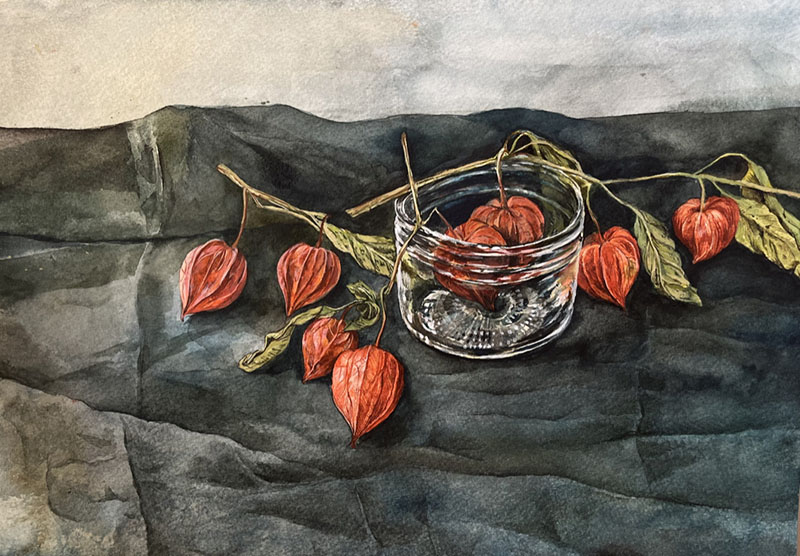
Humbled by Nature
I wanted to ask a little bit more about the motifs that you mentioned. Looking at your artwork, it seems like you focus on plants, flowers, and nature. Why is that?
Thank you for asking. My little painting of a pear is behind me.
I am always fascinated with nature and amazed by the lines and beauty that plants create. I like landscapes too, but I’m more focused on [plants like] flowers.
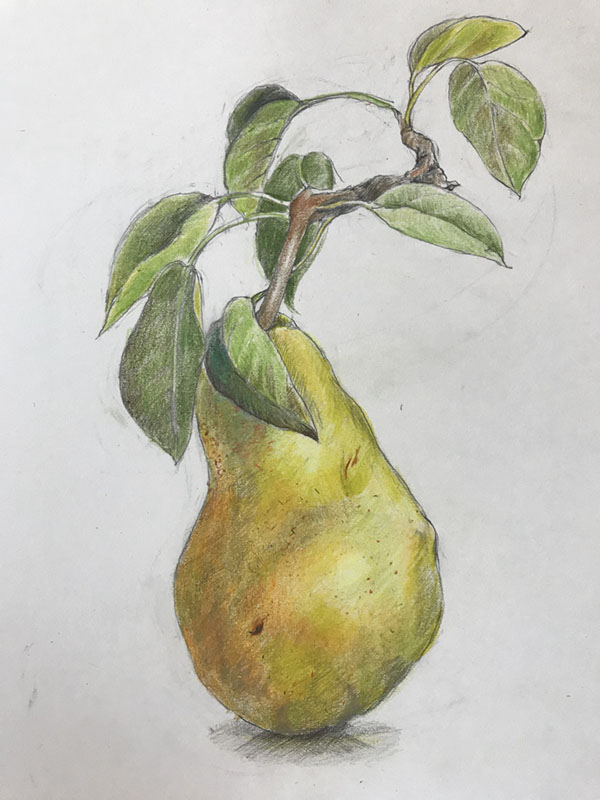
When I follow the lines of flowers, I am free from seeking myself. There is something bigger than all my personal struggles, something spiritual that’s leading me towards something better.
When I try to follow the lines of Chinese lantern plants [also known as winter cherries], flowers, leaves, or tree branches, I am following something that’s already there. It’s something beautiful and magnificent. It’s a little cheesy to say, but it’s as if nature itself is a teacher telling me what to draw. And when I compare my drawing with real nature, nature is always more beautiful and sparkling. I think, “Maybe I’m not drawing this line right,” and those kinds of moments make me feel humble. That’s why I like painting flowers a lot.
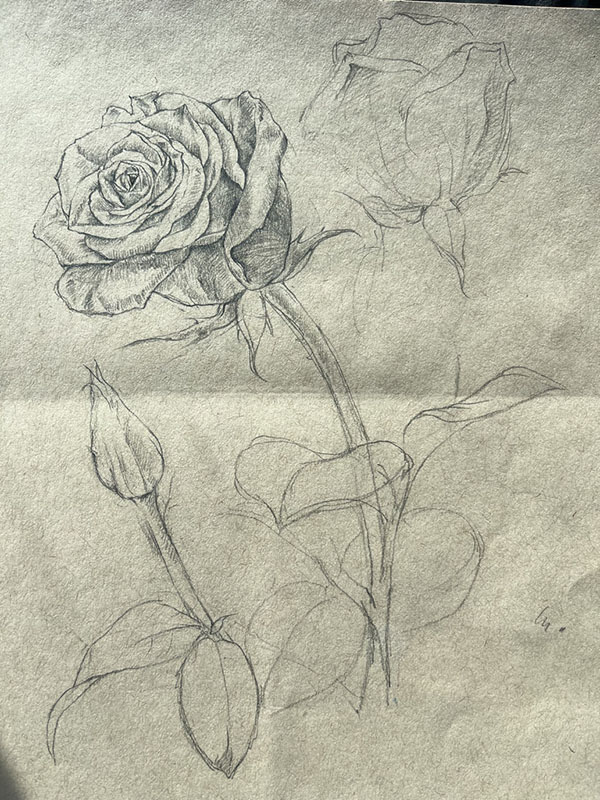
My grandma was also a painter of nihonga, Japanese paintings using [mineral] pigments. And she did a lot of flower paintings. So we [both] always loved botanical art—not detailed, almost scientific botanical art, but one that’s more lyrical and poetic.
I think that’s so wonderful, and it really shows your personality as well. I feel like for a lot of artists, it’s very subjective, humans are at the center, and they’re trying to capture what’s around them. But you said that you’re letting nature guide you, and it seems like your hand is almost moving on its own. That’s a great way to think about it.
You also said that it’s really humbling to see nature. I think all of us can relate to that when we go to big national parks like the Grand Canyon. We see that all the problems we’re struggling with are so tiny [in comparison], and that we are just part of this really big universe. I think there’s a lot to be learned from that.
These kind of thoughts or philosophy about my art were influenced by the great nihonga Japanese painter Kaii Higashiyama. His philosophy is also very humble.
As you paint or follow the lines in nature, [you realize that] your arrogance and thoughts like “I want to be recognized as a great artist,” or “Maybe people would say, ‘This is amazing,’” are all distractions. You just humbly accept the beauty of nature and then follow that.
That’s the state of mind I want to be in. These days, social media is a big distraction for artists. It’s a good thing to be recognized. But if you think of that first when you make something, I think in my case it wouldn’t work well.
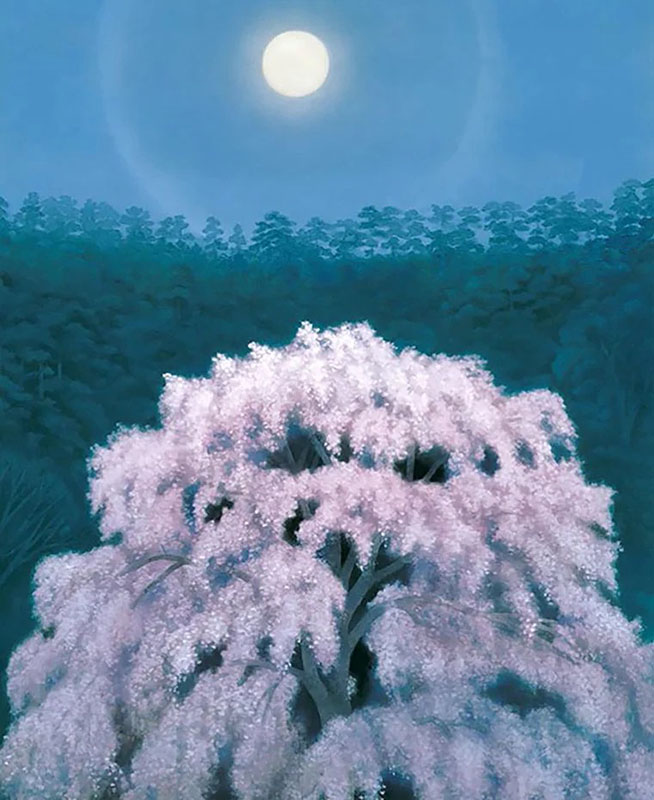
Tanka Poetry
I think that there’s a lot in common between the act of painting and writing poetry. You’re so multi-talented in that you’re able to do both. Could you explain a little bit about your passion for tanka, the traditional Japanese type of poetry? What is tanka, and why are you interested in it?
Tanka is similar to haiku, which is more commonly known in the U.S. Haiku is made of five, seven, five letters (or five, seven, five syllables in English). But in addition to this first half (kaminoku, literally “upper part”), tanka has an additional [two lines of] seven syllables, which is the second half (shimonoku, literally “lower part”). So it’s a longer version of the form for haiku.
My interest in tanka came from my mother. As part of her major in college, she studied Teika Fujiwara, a poet from the Heian era. He was the one who compiled Hyakunin Isshu [a collection of 100 tanka by 100 people].
So I’ve always been familiar with tanka and Teika Fujiwara’s poetry. And I started to write tanka maybe in college, little by little. I shared them with my mom and my grandma back then.
[After that,] I hadn’t written it for many years, but my mom started to send her tanka every month to a tanka poetry group. She asked me if I wanted to join. So I send her my poetry via email [so that she can mail it with her poems], or if I have time, I send it directly to the editors by international mail.
It’s an amateur group. Some of them have self-published their own books. But the founder of that group is Mizuho Ota, a professional tanka poet. And his style is symbolism, very similar to Teika Fujiwara’s style. That was a good fit for me, so I wrote poetry and sent it to them every month for a year before my son was born.
Tanka is a very unique Japanese style of poetry. The order of the words and even a single letter could change the nuance. That’s something that’s very hard to translate into English or any other language. It’s almost like you have a long story to tell, but tanka can concentrate that essence and have the reader imagine the rest of the story. That’s a really great form of poetry, I think.

I think your poetry is very ephemeral. I can tell that you’re incredibly well read, because you know all these words and archaic expressions that a lot of people probably wouldn’t come up with off the cuff. I think you’re very talented.
Thank you so much.
As I speak almost only in English all day, every day here [in the U.S.], it’s hard. I have to look up a lot of words in Japanese, and I wonder, “Is there any other word that’s more suitable?” But that’s really fun, and it’s nice to use that part of my brain.
I feel like when I speak, read, or write in Japanese, I have so many colors on my palette. But in English, I still only have basic colors on my palette, and I have to mix them in many ways.
I never thought about words and vocabulary like a palette. That’s so beautiful, and it really works as an analogy, especially because you’re both an artist and a poet. That’s really cool.
Thank you. I just thought of that imagery the other day.
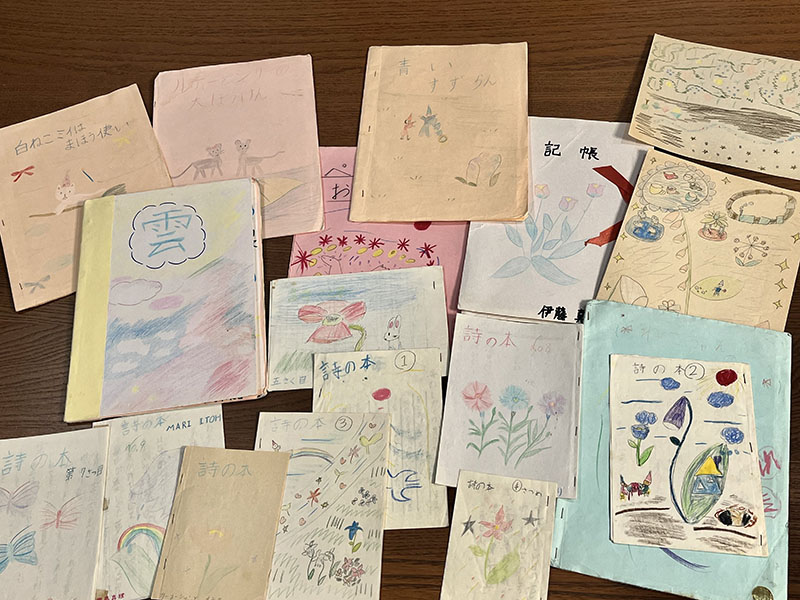
Finding a Community in the U.S.
I want to shift gears a little bit. May I ask what led you to the U.S., how you met your husband, etc.?
Sure. I met my husband at the private school where I was teaching art to middle school students. He was a Saturday English program teacher, so we happened to work on the same floor in my building once a week. We would chat in the hallway, and I came to believe that he’s the one.
Aww, that’s so cute!
I think what made me decide to immigrate to be with him is that he and I have a lot in common in terms of the spiritual kind of thoughts about nature. It’s very rare to find somebody who also feels that way.
And he was also an art major. His art style is different from mine. It’s more realistic.
It must have been a really big decision to come to the U.S., because you had family that you probably felt sad about leaving behind. How was that transition? And after moving to the U.S., how did you overcome any sense of loneliness? How did you build your community?
During the first year, it felt like I had muscle pain in my brain every night. I kept translating my own words, and the speed between translating my thoughts into words, listening, and then translating and thinking about it—I couldn’t do those kinds of things fast enough. It was tough.
But as for loneliness, I was fortunate that I got to meet my husband’s friends through the Pittsburgh Bonsai Society (my husband is a bonsai artist, by the way). They were maybe my first group of friends outside of his family. They were very welcoming.
I didn’t have a driver’s license or car, so I was basically walking around the neighborhood until I got my work authorization. So I might have been lonely, but I tried to paint at my husband’s mom’s house while we lived there.
Then I started working at Trader Joe’s. At first, sometimes I didn’t understand [my colleagues’] jokes or quick chit chat. I thought I could be more expressive and fun to talk with if I could speak better English.
I didn’t really have the time to miss Japan, because I was determined to have a new life in the U.S. And I had to be independent from my mom in Japan any way.
I see. It’s great how you found a community at Trader Joe’s. I recall that [when you applied,] aside from your job application, you also created a wonderful Trader Joe’s sign. With your art, you showed them, “This is what I can do.”

I think that’s really amazing because it shows your strength. You’re always so soft-spoken, you’re a creative soul, and we often have leisurely conversations like this. But you also have this resilience, ability to take quick action, and quick wit to think outside the box like that. I think that takes a lot of guts and talent.
Thank you so much. I made it hard for them to say no!
Yeah, for the first two years [at Trader Joe’s] I was lucky to be able to work as a sign artist. One of their unique features is having handwritten, hand-drawn signs. Making those signs was connected to my art career, so it was fun.

But most of all, I really appreciated the trust the store captain, Jess, had in me. My English was far from perfect. Even then, she saw that my personality fit Trader Joe’s philosophy. Everyone who works there is approachable, helpful, kind, genuine, and hardworking.
Outside of the store, sometimes it becomes a problem because we look too friendly. Sometimes you just want to stay away from people. I thought of that when I was taking a walk alone at a park the other day. A lot of people asked me about things, and I thought, “Maybe I look too Trader Joe-y.”
Haha! Too helpful?
Yeah. People think, “She looks helpful. Let’s ask her!”
Those are the kinds of people who work at Trader Joe’s. It’s wonderful that going to work feels more like a meeting with friends or family.

Overcoming Challenges as a Family
You live in Pittsburgh now, and you lived in Pittsburgh before. But in between, you also lived in Idaho, and you shared with me how you had some really big challenges with your family and especially your son. Would you mind sharing that story to the extent that you can?
In 2019, my husband got to work at a landscaping company managed by a Japanese garden master in Portland, Oregon. For my husband, me, and our daughter who was two years old back then, it was a big decision [to move there]. But we thought, “It’s worth it; we would regret if we don’t do this.”
So we all moved to Portland for his job, but it didn’t work out. And so we moved to Idaho, the state next to Oregon, because that was a more affordable place to live. We couldn’t afford to go back to Pittsburgh yet, and we thought we should enjoy life in the West a little more.
We ended up living in Idaho for two years, including the pandemic. And I had our second child, a son, in the midst of the pandemic chaos. He was born in September 2020.
When my son was born, he had a little bump on his back. It wasn’t seen on the sonogram, so it was a total surprise. He had spina bifida.
But for me, the pregnancy was already a difficult journey. And I had just finally reached the goal [of giving birth]. So I couldn’t just jump into the next journey right away.
A lot of the medical words that the nurses and doctors said in English were hard to keep up with. I couldn’t even read the words in print. It said “defect.” I couldn’t even look at the word.
It was scary for me to look up Japanese articles about spina bifida. But I started reading them maybe after five days or so. The doctor said his case is not the worst, but not the best, either.
I went to a spina bifida clinic and saw a lot of kids in wheelchairs or with crutches. Then I thought, “This is something I have to accept. No matter what happens to him, I would accept it.”
That’s how I felt at the first doctor’s checkup. It was so nice that this doctor slowed down his speech so that I could understand. I would ask him, “What did you say?” and take notes on how to spell words. There were a lot of medical words I had to look up later in Japanese.
What he said at that time was very touching. He said, “There are billions and billions of cells that creates the human body. Just one of them didn’t do right. That’s it.”
And then thankfully, our son had his surgery when he was six months old. Somehow the doctors merged the part of the spinal cord sticking out into the spine.
It was one of the most mentally challenging times. And we never had any [family medical] history for that kind of spinal defect. It could have been something environmental. We don’t know; it just happened. But it really brought my husband and me closer.
I feel really blessed that our son’s now able to walk and run and dance. We still have to keep an eye on his growth. His speech is delayed because he had to focus on his physical delay at an early age. But that’s okay. I think he’s catching up.
International marriages and moving to another country are already challenging to begin with. To also have this other new challenge with a newborn during the pandemic, on top of raising another toddler, is incredible.
You and your husband went through a lot. And your daughter seems like such a good big sister. And of course, your son is a little champion. He seems really happy, and I would love to meet him at some point. It seems like you have a really close family, and it’s wonderful to hear that your son’s in good health now.
Yeah. Speaking of international marriages, we had a lot of ups and downs. The Japanese way of communication is often very indirect. You expect something without telling [the other person], and when they don’t respond the way you’d hoped, you get offended. But American husbands often have no idea.
So that’s a common cause for our arguments. Often with his family members as well. But as long as you are family, you have to talk it out. We’re hanging in there.
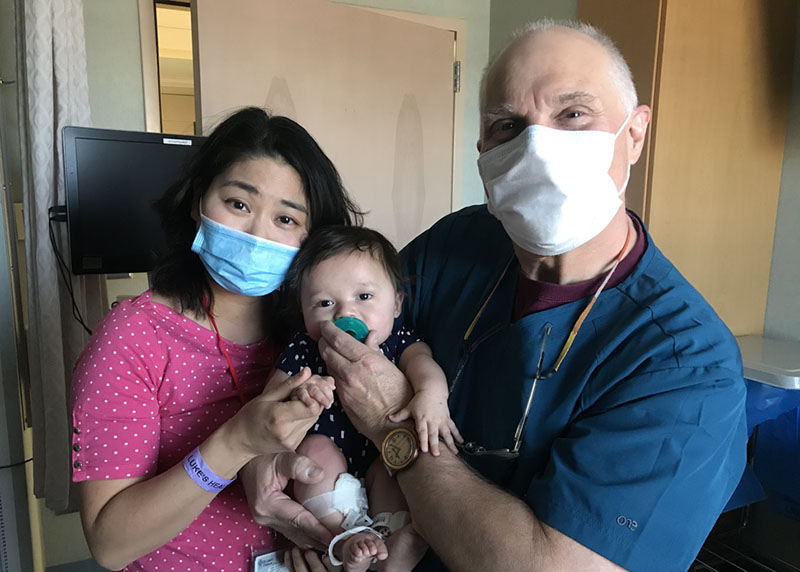
Beauty That is Not Loudly Told
I wanted to ask if you have any advice for others. You’re amazing at maintaining this kindness and sense of wonder that I mentioned at the beginning. Despite these challenges, you never lash out at others, and you never seem irritated. You always seem very calm, and that’s something that I really admire about you.
How do you do that? And how do you maintain your appreciation for beauty, where you say, “Okay, that’s that, but now I’m going to focus on this poem or this artwork”?
When my husband read the part [in the list of potential interview questions] where you said that I have the ability to stay calm, he started laughing hard. He said, “Yeah, right!” So I am not calm with the person I’m closest to. I show him the worst version of myself a lot, but he’s been putting up with me, thankfully.
A lot of struggles between people [is resolved through] “forget and forgive.” But I also think Americans tend to feel like there’s always a chance to make up and honestly express how you feel. Sometimes that’s harder in Japanese culture. Instead of talking out loud and being honest with each other, some Japanese people block others [or give up on further communication to stay away from conflicts].
As for me staying positive, I think the bottom line is that I believe in the good in people. There’s beauty in the world that is not loudly told. There’s beauty when you have the eyes to find it and trust in people.
I see. That is very powerful. Thank you so much.
Would you have any advice for people who might be in a similar situation, where they are working or living in another country, struggling with building their own communities, or [contending with] their changing identities, etc.?
For me, having a connection with tanka poetry and listening to rakugo (traditional Japanese verbal comedy) [has been helpful]. Being connected to the Japanese language is part of who I am.
I think it’s important to have the time to enjoy the beauty of the Japanese language no matter where you are. You can truly laugh on time and understand it on the same level [as others].
And just trust in yourself. Always try to be a conversation starter and take the first step.
I like the way that it was said in the movie Cast Away: “Who knows what the tide will bring?” And there are things you could do to make a difference no matter where you go. That kind of positive thinking [is important].
I really appreciate the way you always stay positive no matter what. And your outlook on life is very poetic. You always see beauty in not only aspects of nature, but also people. You said that you believe in the goodness of people and I think that’s a really powerful way to think about it.
Thank you so much. I’m honored to be your friend for almost… wait, not 30—25 years? Right?
Something like almost 30…
No, no. I’ve known you since we’re 13 years old. Well, we shouldn’t say our exact age!
Haha, okay, sorry!
You’re just such an amazing lady.
Not at all. Thank you very much!
Alright, I’ll see you soon. Thank you so much!

Postscript:
We did not touch upon it in our interview, but since moving to the U.S., Mari has added several years to her teaching experience. She taught Japanese to students at Chatham University for a year. She also assisted kindergarten classes and taught Japanese literature to elementary and middle school students at the Pittsburgh Japanese School for three years. She says: “Teaching Japanese has given me another perspective on language. Now I have my own challenge of providing as much bilingual education as I can to my two children!”
